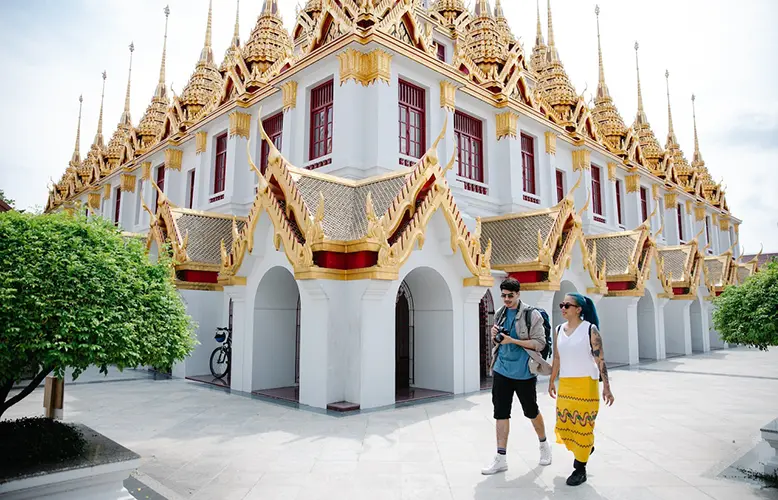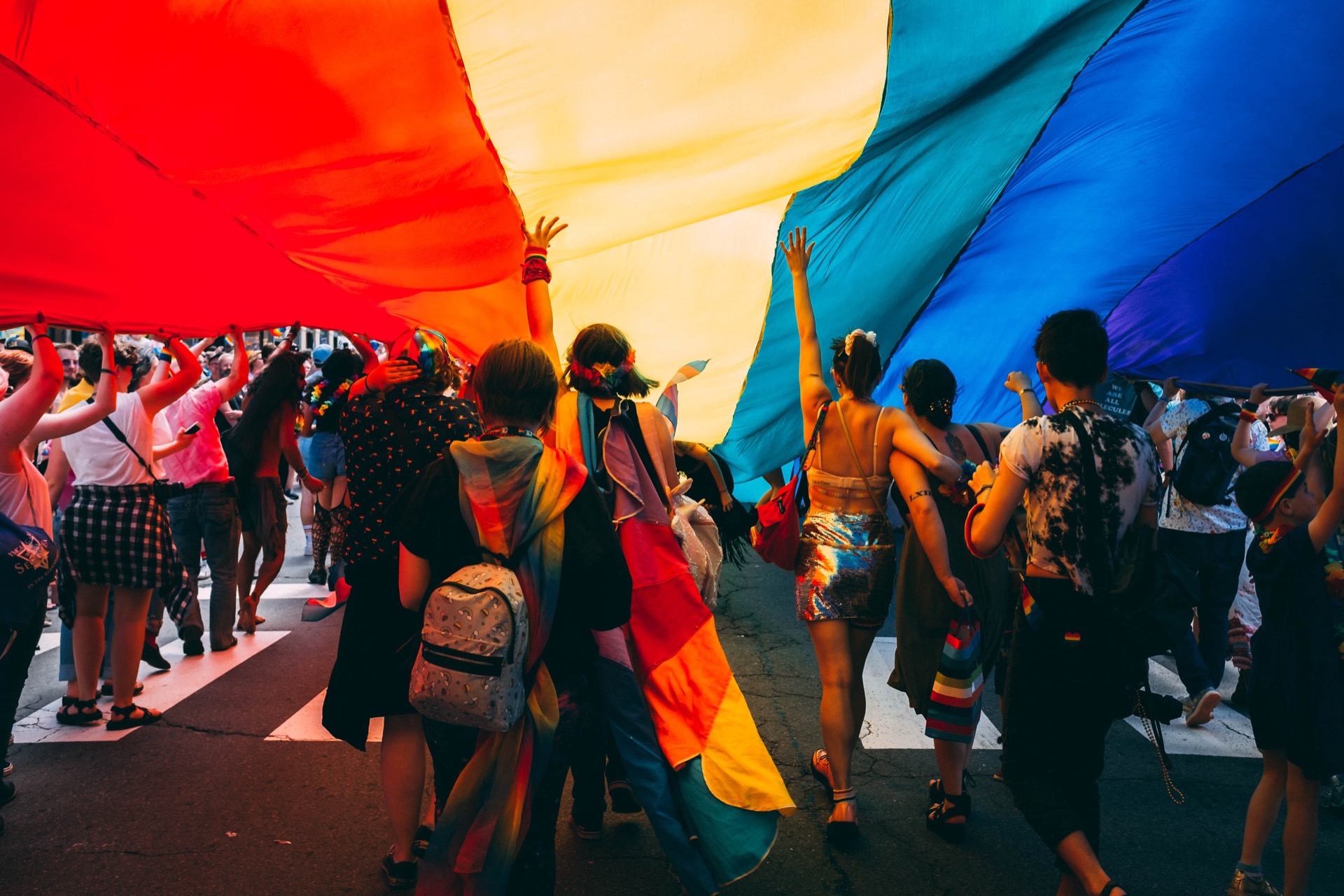Have you ever wondered why Thailand is often referred to as the “Land of Smiles”? Well, it’s not just because of the picturesque beaches and tropical landscapes. The true warmth of Thailand lies within its people and their local culture. From the moment you step foot in this beautiful country, you are greeted with genuine hospitality and kindness that is deeply rooted in Thai tradition. In this article, we will delve into the captivating world of Thai local culture, where you will discover the secret behind the ever-present smiles and experience the true essence of Thailand.
When it comes to embracing warmth and friendliness, Thailand is in a league of its own. The Thai people are renowned for their warm hospitality, making visitors feel like they are part of the family. You will be greeted with a respectful “wai” – hands pressed together in a prayer-like motion – accompanied by a friendly smile. This gesture is a symbol of respect and is often used to greet both strangers and loved ones. It is this genuine warmth and genuine connection that sets the Thai local culture apart.
Thai local culture is deeply rooted in tradition and spirituality. Buddhism plays a significant role in shaping the beliefs, values, and practices of the Thai people. You will often come across breathtaking temples and majestic Buddha statues, which are not only places of worship but also symbols of peace and tranquility. Thai locals practice their faith with devotion and offer daily prayers and offerings at these sacred sites. This spiritual connection adds a layer of serenity and harmony to the Thai local culture, which further enhances the sense of warmth and peace that you will experience.
As you explore Thai local culture, you will also discover the importance of food in Thai society. Thai cuisine is a heavenly blend of flavors, spices, and textures that will tantalize your taste buds. From the street food vendors to the fine-dining restaurants, every bite is a burst of culinary brilliance. But it’s not just about the food itself – it’s the entire dining experience that is truly special. Thai people believe that sharing a meal together fosters a sense of unity and togetherness. So, prepare yourself to be pleasantly overwhelmed by the genuine hospitality and warmth that accompany every gastronomic adventure in Thailand.
In this article, we have merely scratched the surface of Thai local culture and the warmth that radiates from its people. From the moment you arrive, you will be enveloped in a sense of genuine connection and hospitality that is unparalleled. So, buckle up and get ready to immerse yourself in the captivating world of Thai local culture, where you will experience the true meaning of warmth and discover the hidden gems that make Thailand the Land of Smiles.

Understanding Thai Hospitality
When you think of Thailand, one of the first things that comes to mind is the warm and welcoming nature of the Thai people. Thai hospitality is deeply rooted in the concept of “sanuk”, which can be roughly translated as finding joy in everything. This idea permeates all aspects of Thai culture, from social interactions to daily routines.
The Concept of “Sanuk” – Finding Joy in Everything
“Sanuk” is a way of life in Thailand. It means finding pleasure in even the simplest things and embodies the Thai belief in making the most out of every moment. Whether it’s enjoying a delicious meal, engaging in conversation, or participating in a traditional dance, the Thai people always find a way to infuse joy and laughter into their experiences.
The Importance of Harmony and Respect in Thai Culture
In Thai society, harmony and respect are highly valued. This can be seen in the way Thai people interact with one another and conduct themselves in public. Thai culture places a strong emphasis on maintaining a peaceful coexistence with others, which is why you will often find Thai people to be polite, kind, and considerate.
Thai people are known for their soft-spoken nature and gentle demeanor. They greet one another with a smile and a “wai”, which is a traditional Thai gesture of respect. The “wai” involves placing your palms together in a prayer-like position and bowing slightly. This simple act of greeting demonstrates the importance of mutual respect and sets the tone for all social interactions in Thailand.
Generosity and Kindness as Cultural Norms
Generosity and kindness are deeply ingrained in Thai culture. Thai people are known for their willingness to go out of their way to help others, whether it’s a stranger in need or a friend in distress. It is not uncommon to see Thai people offering food to monks, giving donations to temples, or lending a helping hand to those less fortunate.
Thai people also place great importance on the concept of “kreng jai”, which roughly translates to “consideration for others”. This means being mindful of how your actions impact those around you and going out of your way to avoid causing inconvenience or discomfort to others. This cultural norm creates a sense of community and fosters strong bonds between people.
Exploring Thai Traditions and Customs
In addition to their warm hospitality, Thai people take great pride in their rich traditions and customs. These traditions are deeply rooted in Thai history, religion, and cultural values, and play a significant role in shaping Thai identity.
Traditional Thai Greetings and Wai
As mentioned earlier, the “wai” is an essential part of Thai culture and plays a crucial role in social interactions. When greeting someone in Thailand, you can expect to receive a warm smile accompanied by a “wai” gesture. The level of the “wai” can vary depending on factors such as age and social status, with younger or lower-ranking individuals offering a higher “wai” than their elders or superiors.
The Significance of Buddhist Temples and Rituals
Buddhism is the predominant religion in Thailand, and Buddhist temples, or “wat”, hold great significance in Thai society. These temples serve as spiritual and community centers and are a common sight across the country. Thai people visit temples to pay their respects to the Buddha, offer prayers, and seek blessings.
Thai temples are known for their intricate architecture, vibrant colors, and peaceful ambiance. They provide a serene and tranquil space for reflection and contemplation. During religious festivals and important occasions, temples come alive with elaborate ceremonies, chanting, and offerings.
Thai Festivals: Celebrating Culture and Diversity
Thai festivals are vibrant, colorful, and joyous celebrations that showcase the cultural diversity and rich heritage of Thailand. From the water fights of Songkran to the lantern releases of Loy Krathong, these festivals provide a unique opportunity to experience Thai traditions and customs.
During these festivals, the streets of Thailand come alive with parades, traditional dances, music, and street food vendors. It is a time for families and communities to come together, reflect on their shared cultural identity, and celebrate the richness of Thai culture.

Discovering Thai Cuisine and Culinary Traditions
Thai cuisine is renowned worldwide for its bold flavors, vibrant colors, and unique ingredients. Thai food is a culinary adventure that combines sweet, sour, spicy, and salty flavors to create a harmonious explosion of taste.
The Art of Thai Street Food: Flavors and Aromas
Thai street food is a true reflection of the country’s rich culinary heritage. From the bustling streets of Bangkok to the vibrant night markets of Chiang Mai, you will find an array of food stalls serving up delicious and affordable dishes.
The aroma of sizzling meats, the sizzle of frying noodles, and the fragrant spices used in Thai cuisine will awaken your senses and leave you craving for more. Whether it’s the famous Pad Thai, the spicy Tom Yum soup, or the aromatic Green Curry, Thai street food is a feast for both the palate and the soul.
Regional Thai Cuisine: Diversity in Tastes and Ingredients
Much like Thailand’s diverse landscapes and cultural traditions, the country’s cuisine varies from region to region. From the spicy and coconut-flavored dishes of Southern Thailand to the milder and herb-infused dishes of Northern Thailand, each region has its own distinct flavors and cooking techniques.
In the north, you will find dishes such as Khao Soi, a rich and creamy curry noodle soup, while in the south, dishes like Massaman Curry, a fragrant and savory curry with influences from Indian and Malay cuisine, are popular. Exploring the regional cuisines of Thailand is like embarking on a culinary journey through the country’s diverse landscapes and cultural traditions.
Thai Culinary Traditions: From Farm to Table
Thai cuisine is deeply rooted in agricultural traditions, with fresh and locally sourced ingredients forming the backbone of every dish. Thai people take great pride in their agriculture and have a strong connection to the land.
Farm-to-table practices are prevalent in Thailand, with many Thai people growing their fruits, vegetables, and herbs in their backyard gardens. The use of fresh herbs and spices, such as lemongrass, basil, and kaffir lime leaves, infuses Thai dishes with vibrant flavors and aromatic aromas.
Traditional Thai Arts and Crafts
Thai arts and crafts are a reflection of the country’s rich cultural heritage and artistic traditions. From intricate silk weaving to mesmerizing wood carvings, Thai craftsmanship is renowned for its attention to detail and meticulous techniques.
The Art of Thai Silk Weaving
Thai silk is celebrated for its exquisite quality and intricate designs. The art of silk weaving has been passed down through generations of Thai artisans and requires skill, patience, and dedication.
Silk weaving is more than just a craft; it is a form of artistic expression. Thai silk is often adorned with elaborate patterns and motifs, inspired by nature, mythology, and traditional Thai culture. Each piece of silk tells a story and represents a piece of Thai heritage.
Intricate Thai Wood Carvings: A Reflection of Culture
Thai wood carvings are known for their intricate designs and attention to detail. From delicate flowers and mythical creatures to ornate furniture and architectural elements, Thai wood carvings add a touch of elegance and beauty to Thai temples, palaces, and homes.
Wood carving in Thailand is considered a sacred art form, and the skills and techniques required to create these masterpieces are passed down from one generation to the next. Thai wood carvings are not only beautiful to look at but also serve as a testament to the rich cultural heritage of the Thai people.
Thai Traditional Dance and Music: An Unforgettable Experience
Thai traditional dance and music are a feast for the senses. The graceful movements, vibrant costumes, and rhythmic melodies transport you to a world of elegance and beauty.
Traditional Thai dances, such as the graceful “khon” or the lively “ramwong,” are often performed during important ceremonies and festivals. Thai music, on the other hand, is characterized by its unique instruments such as the khim (a hammered dulcimer) and the ranad (a xylophone-like instrument). Attending a traditional Thai dance or music performance is a mesmerizing experience that will leave a lasting impression.

Thai Language and Communication
Language is a vital part of any culture, and Thai language plays a significant role in Thai society. While English is widely spoken in tourist areas, learning a few basic Thai phrases can go a long way in making your interactions with locals more meaningful.
Basic Thai Phrases and Etiquette for Visitors
As a visitor to Thailand, learning a few basic Thai phrases can help you navigate daily interactions and showcase your appreciation for the local culture. Greetings such as “sawasdee” (hello) and “khop khun” (thank you) are commonly used and will be well-received by the locals.
Thai people appreciate when visitors take the time to learn and respect their language, even if it’s just a few phrases. By making the effort to communicate in Thai, you show your genuine interest in and respect for the local culture.
The Influence of Tone in Thai Language
One unique aspect of the Thai language is the reliance on tone to convey meaning. Thai is a tonal language, which means that the tone used when pronouncing a word can change its meaning entirely.
There are five tones in Thai: low, mid, high, rising, and falling. Each tone corresponds to a different pitch or inflection, and mispronouncing a word’s tone can lead to confusion or misunderstanding. While perfecting Thai tones may take time and practice, making an effort to pronounce words correctly will be greatly appreciated by the locals.
Non-verbal Communication in Thai Culture
In Thai culture, non-verbal communication is just as important as verbal communication. Thai people pay close attention to facial expressions, body language, and gestures when communicating with others.
Smiling is a common form of non-verbal communication in Thailand and is seen as a sign of friendliness and politeness. Thai people often use their hands to point or beckon rather than their index finger, as pointing with the finger is considered impolite. Learning and respecting these non-verbal cues will help you navigate social interactions in Thailand with ease and respect.
The Importance of Family in Thai Culture
Thai society places great importance on family and the bonds between its members. Family is the cornerstone of Thai culture and plays a significant role in shaping values, traditions, and social interactions.
Thai Family Structure and Values
Thai families are typically large and close-knit, with several generations living under one roof. The Thai concept of family extends beyond immediate relatives and includes aunts, uncles, cousins, and even close friends.
Respect for elders is a fundamental value in Thai culture. Elders are revered for their wisdom and experience, and their opinions and advice are highly valued. Thai children are taught to defer to their elders and to take care of them in their old age.
The Role of Elders in Thai Society
In Thai culture, elders are held in high regard and play an important role in the social fabric of society. They are seen as the keepers of tradition, culture, and wisdom, and their guidance and advice are valued in both personal and professional settings.
Thai people often seek the blessings and approval of their elders before making important decisions or embarking on new ventures. Elders are also the gatekeepers of family traditions and are responsible for passing down cultural knowledge and skills to the younger generations.
Celebrating Lifecycles: Thai Weddings and Funerals
Weddings and funerals are significant events in Thai culture, as they mark important milestones in a person’s life. These occasions are steeped in tradition and are a reflection of Thai values and customs.
Thai weddings are elaborate affairs that bring together families and friends in a celebration of love and unity. Traditional customs such as the “khan mak” (the engagement ceremony) and the “rod nam sang” (the water pouring ceremony) are performed to honor the couple and their families.
Funerals in Thailand are equally important and serve as a way to pay respects to the deceased and provide closure for the family. Thai funerals often involve elaborate ceremonies and rituals, such as the chanting of Buddhist scriptures and the lighting of incense and candles.

Thai Beliefs and Superstitions
Thai culture is deeply intertwined with spirituality, and beliefs and superstitions play a significant role in the lives of the Thai people. Both faith and superstition coexist, creating a unique blend of religious practices and cultural customs.
Spiritual Beliefs and the Role of Buddhism
Buddhism is the predominant religion in Thailand, and its teachings are deeply ingrained in Thai society. Thai people find solace, guidance, and moral compass in the teachings of the Buddha, which emphasize compassion, mindfulness, and the pursuit of enlightenment.
Thai people often visit Buddhist temples to offer prayers, make merit, and seek guidance from monks. Buddhist monasteries are considered sacred spaces, and the presence of a temple in a community is seen as a blessing.
Thai Buddhist Temples: Centers of Faith and Spirituality
Buddhist temples, or “wat”, are an integral part of the Thai landscape and serve as spiritual and community centers. Thai people visit temples not only for religious purposes but also to participate in cultural and social activities.
Temples house sacred relics, statues of the Buddha, and serve as a gathering place for religious ceremonies and festivals. Visiting a Thai temple is an opportunity to learn about the country’s spiritual traditions, experience its serene ambiance, and immerse yourself in Thai culture.
Superstitions and Taboos in Thai Culture
Thai culture is rich in superstitions and taboos, many of which are rooted in ancient folklore and beliefs. Thai people hold a deep respect for spirits and supernatural forces and take precautions to appease them and avoid misfortune.
For example, the spirit house, a small shrine found outside many Thai homes and businesses, is believed to provide shelter for spirits and protect the premises from harm. Thai people also observe certain taboos, such as avoiding pointing at sacred statues or stepping over thresholds, to show respect and prevent bad luck.
Thai Arts and Crafts: Supporting Local Communities
Thai arts and crafts are not only a form of cultural expression but also provide economic opportunities for local communities. Supporting local artisans and purchasing handmade crafts contributes to the preservation of traditional skills and empowers local communities.
Promoting Sustainable Tourism through Artisanal Crafts
Thailand is a popular tourist destination, and the demand for souvenirs and handicrafts is high. By choosing to purchase locally made crafts, you can support sustainable tourism and contribute to the livelihoods of local artisans and communities.
Many small-scale artisans rely on tourism as a source of income, and by supporting their crafts, you are helping to preserve their traditional skills and fostering cultural diversity.
Preserving Traditional Skills and Knowledge
Traditional Thai arts and crafts are passed down from one generation to the next, ensuring that these skills and knowledge are preserved and celebrated. By investing in these crafts, you are contributing to the preservation of Thailand’s cultural heritage and ensuring its longevity.
Thai artisans take great pride in their craft and put in hours of work to create exquisite pieces. From intricate silverware to intricately carved wooden sculptures, every piece tells a story and represents a piece of Thai identity.
Empowering Local Communities through Handicrafts
Sustainable tourism and responsible consumerism can have a positive impact on local communities. Supporting local artisans through the purchase of their handicrafts helps provide economic opportunities, empower individuals, and promote cultural preservation.
By valuing and appreciating Thai arts and crafts, you are not only embracing the warmth of Thai culture but also contributing to the social and economic development of the communities that create these beautiful works of art.

Appreciating Thai Nature and Environmental Conservation
Thailand is home to breathtaking natural landscapes, from lush jungles and pristine beaches to towering mountains and vibrant coral reefs. Thai people have a deep appreciation for their natural surroundings and are actively involved in environmental conservation efforts.
The Significance of Thailand’s Natural Landscapes
Thailand’s natural landscapes are a source of inspiration, spirituality, and recreation for Thai people. They hold great significance in Thai culture and are often revered as sacred places.
From the majestic mountains of the north to the crystal-clear waters of the south, Thailand’s natural beauty attracts visitors from around the world. Whether it’s exploring national parks, trekking through jungles, or diving in pristine coral reefs, experiencing Thailand’s natural landscapes is a reminder of the importance of preserving these fragile ecosystems.
Ecotourism in Thailand: Balancing Preservation and Tourism
Thailand has embraced the concept of ecotourism, which seeks to promote sustainable tourism practices that minimize negative impacts on the environment and benefit local communities. Ecotourism in Thailand focuses on responsible travel, conservation, and community development.
Thai people are actively involved in ecotourism initiatives, from community-based conservation projects to sustainable farming practices. By engaging in eco-friendly activities and supporting local initiatives, visitors can enjoy Thailand’s natural beauty while preserving it for future generations.
Conservation Efforts: Protecting Thailand’s Rich Biodiversity
Thai people recognize the importance of conserving their country’s rich biodiversity. Thailand is home to a wide array of plant and animal species, many of which are endemic to the region.
Conservation organizations and national parks across Thailand are working tirelessly to protect and preserve these unique ecosystems. From reforestation efforts to wildlife conservation programs, these initiatives aim to safeguard Thailand’s natural heritage and promote a sustainable future.
Conclusion
Embracing the warmth of Thai local culture is an immersive and transformative experience. The genuine hospitality, rich traditions, and vibrant customs of the Thai people provide insight into a culture that is steeped in history, spirituality, and community.
From the joyous celebrations of Thai festivals to the flavors and aromas of Thai cuisine, each aspect of Thai culture invites you to embrace the warmth and hospitality of the Thai people. Whether it’s exploring the exquisite art forms, navigating cultural norms, or immersing yourself in the natural beauty of Thailand, embracing Thai culture is a journey of discovery, warmth, and lifelong memories. So pack your bags, open your heart, and get ready to embrace the richness and vibrancy of Thai local culture.
